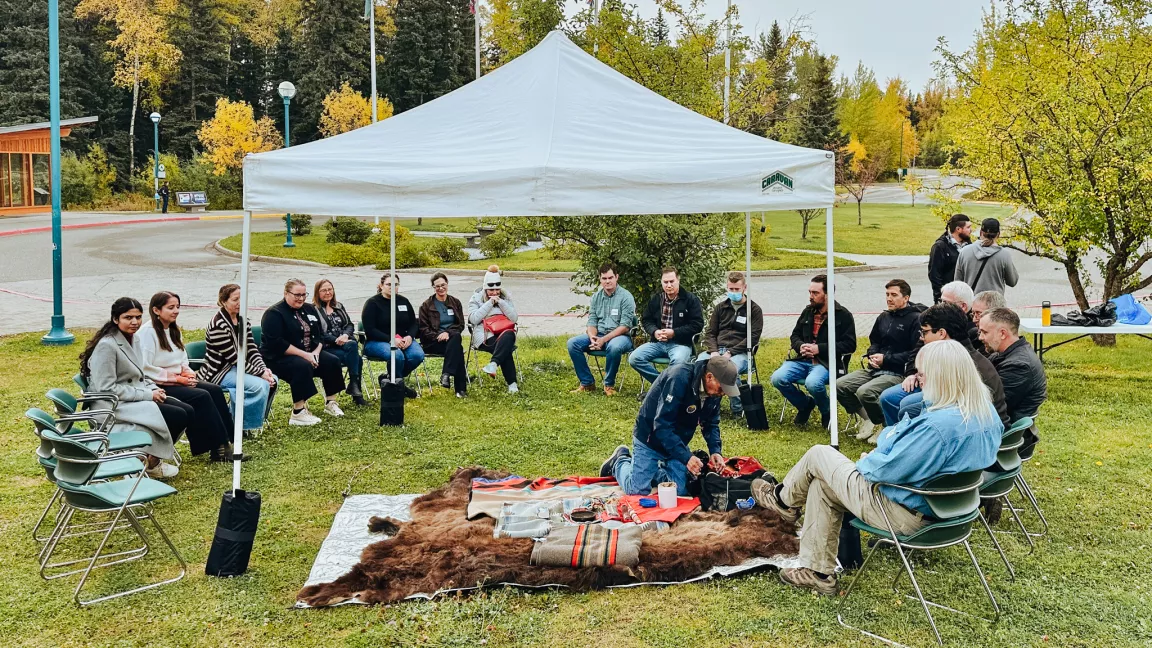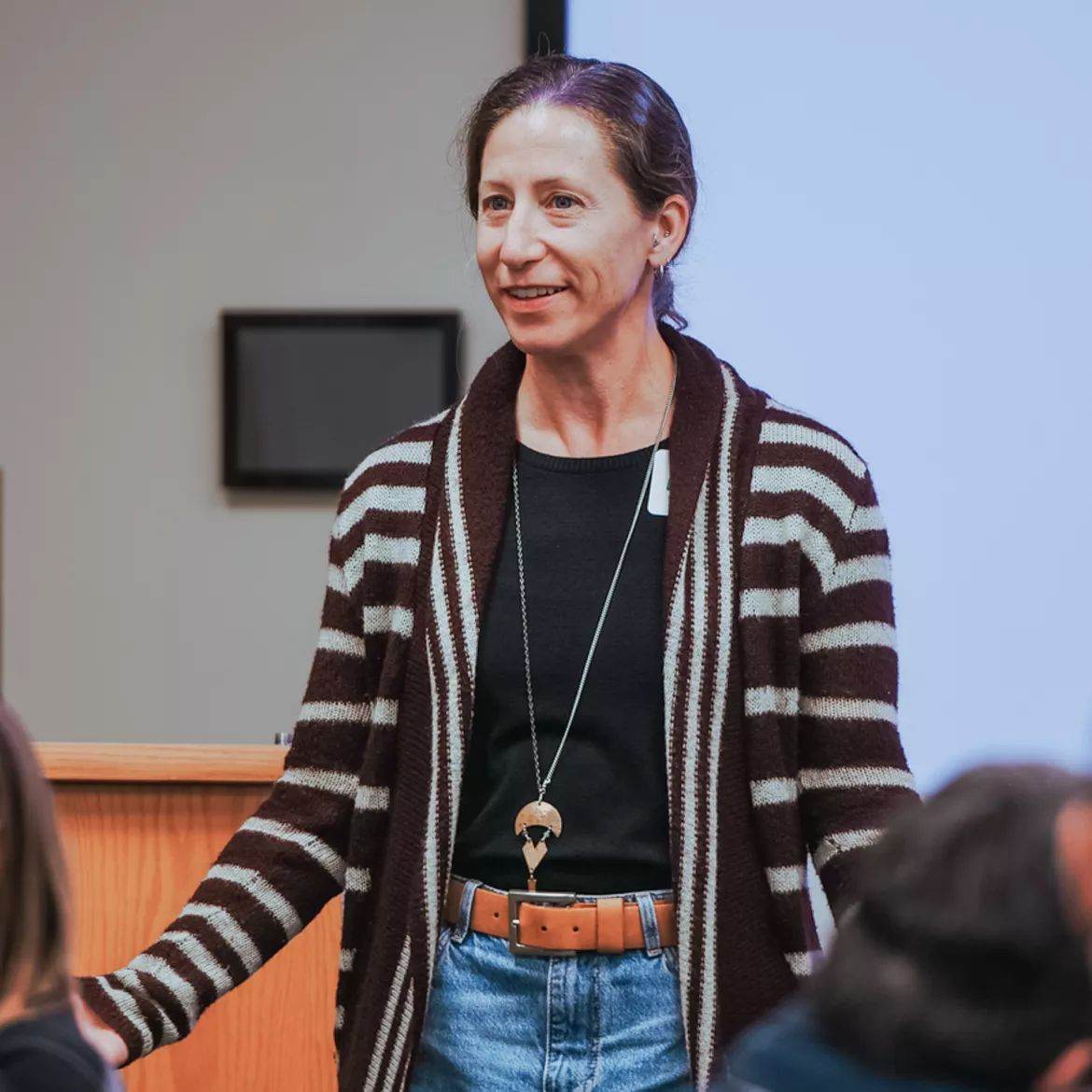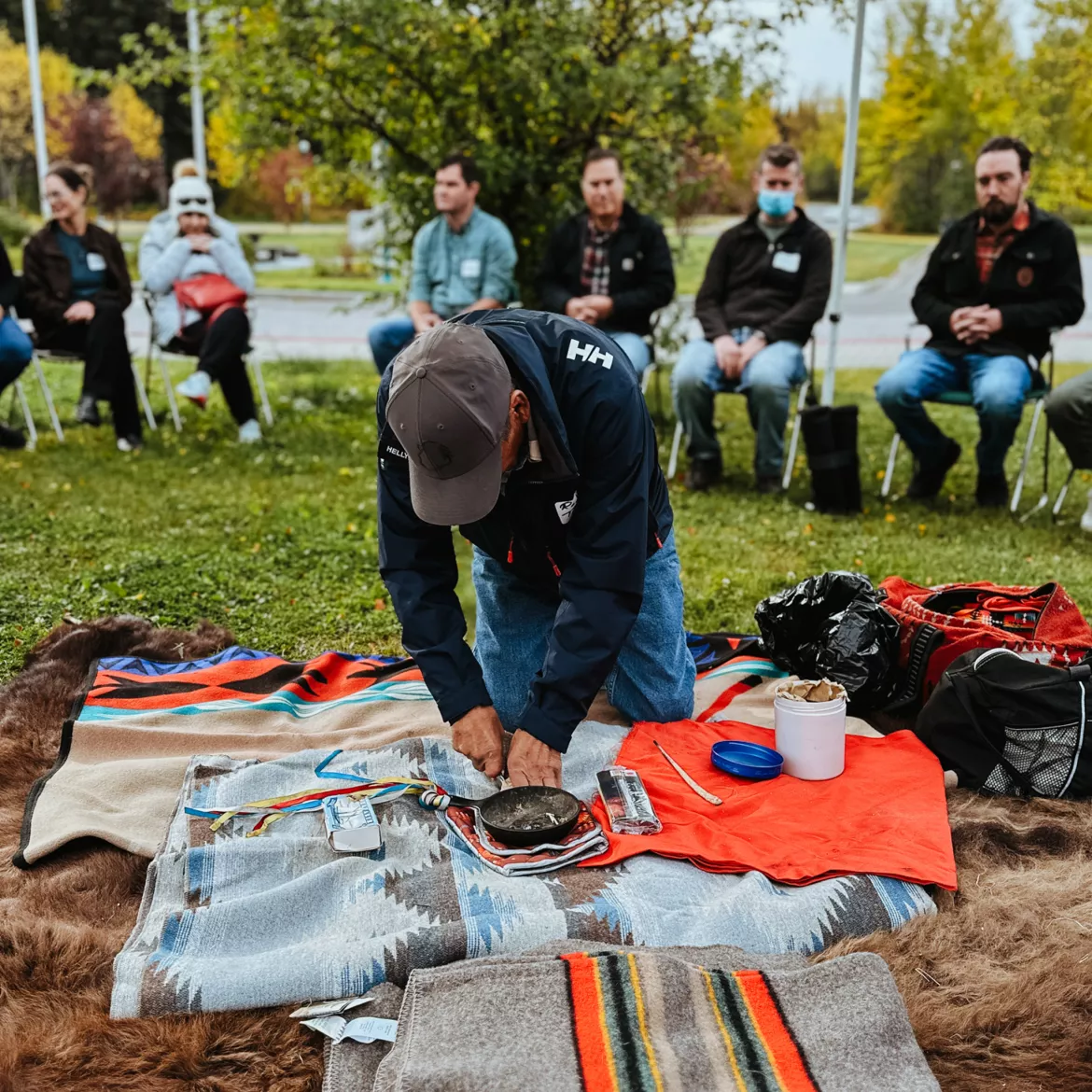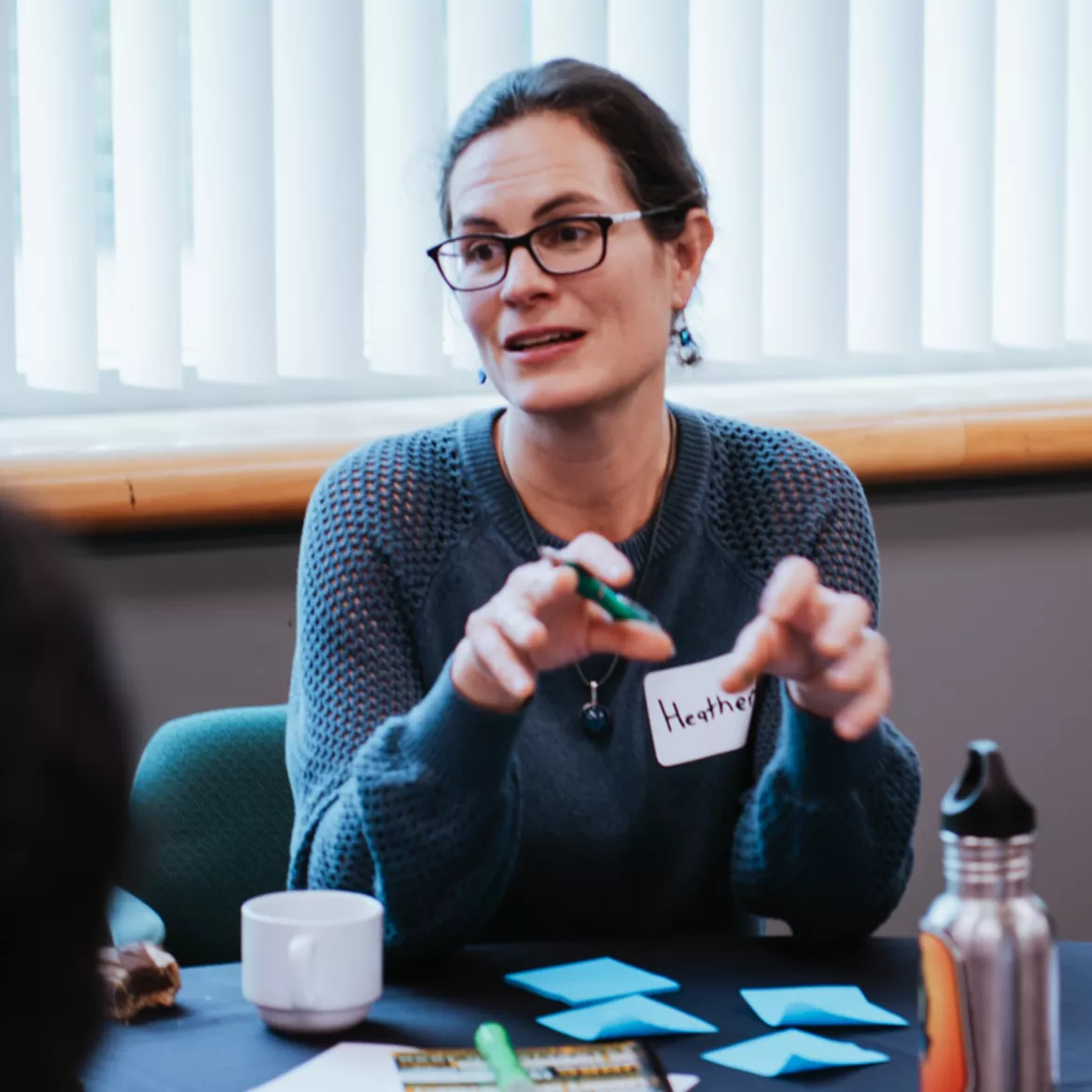GROWing knowledge on the impact of glyphosate on forest ecosystems
With more than $1.5 million in funding, the GROW research project team gathered with community partners to officially launch a collaborative study aimed at digging deeper into the ecological and health impacts of herbicides on forest ecosystems.

Prince George, B.C. - A knowledge-sharing event at the University of Northern British Columbia marked the launch of a five-year collaborative research initiative aimed at deepening understanding of the impact of glyphosate-based herbicides (GBH) on forest ecosystems.
The two-day gathering for the Glyphosate Research on Forest Organisms and Wildlife Health (GROW) project at UNBC’s Prince George campus in October brought together researchers, students, partners and interested community members from B.C. and Alberta.

Led by Ecosystem Science and Management Associate Professor Dr. Lisa Wood (shown in photo at right), the research team received a Natural Sciences and Engineering Research Council of Canada (NSERC) Alliance Society grant worth more than $1.5 million with in-kind partner contributions. With rigorous criteria, the grant is only awarded to research of fundamental importance to the Canadian public.
Building on her 10 years of research into the persistence and residues of GBH in forests, Wood says this project takes a new direction from previous studies of this type, moving from more controlled settings to examining how the herbicides influence gut bacteria and hormones in organisms in the ‘wild’ forest food web.
“The research we’re conducting is collaborative, with partners deeply invested in participating in the research activities and in the outcomes that will inform their very livelihoods and ways of ways of living. We plan to hold annual events at various locations to foster continuous, meaningful conversations and allow for broad and diverse participation,” says Wood. “This knowledge sharing event was just the first of ongoing communications that will take place in various forms between the individuals and groups partnering on the GROW project.”

Five members of the Swan River First Nation travelled more than 700-kilometres from their home community to participate in the project launch. Elder Dustin Twin led a traditional Cree Opening Ceremony at the start of the gathering, highlighting the significance of Indigenous ways of knowing and perspectives in this research.
“This partnership with UNBC is helping us fulfill a desire we’ve had for some time – we have been wanting to do actual monitoring of our environment in a scientific way,” says Twin (shown in photo at left). “Our grandparents believed in science in their own way. To me, science leads the way – medical science, environmental science – it will help protect our environments for the future. It’s for the world, not just us.”
“Healthy lands for First Nation communities equate to areas where food can be harvested without the risk of contamination from chemicals like glyphosate. These food harvesting practices lead to good health, cultural wellness and food sovereignty,” says Wood. “Providing research to amplify Indigenous voices on issues of concerns supports reconciliation efforts.”
In addition to the Swan River First Nation, the Alberta Trappers Association, the British Columbia Trappers Association and British Columbia Wildlife Federation are partners in the GROW project, each bringing invaluable perspectives to the study of GBH residues on forest health.
The research kick-off was an opportunity to share those perspectives; listen to detailed presentations from the researchers and student researchers involved; discuss specific opportunities and challenges within the project; and participate in activities designed to foster respect, connections and understanding.

“It was great meeting with a diverse group of people who live and work on the land –– together with scientists knowledgeable about the region – to discuss our current understandings, what we don’t know, and what we’d like to find out,” says Ecosystem Science and Management Professor Dr. Dezene Huber. “It helped for all of us to hear about what is important to those on the land and what questions can be feasibly answered with science.”
As part of the GROW project, Wood’s research team will focus on the stress responses of plants exposed to different formulations of GBH, the interactions between herbicide stress and climate in plants and how these stressors impact the nutritional value of the plants.
While Huber’s research group will be studying how spider and native bee communities respond to herbicide applications during typical forestry operations. With both species of arthropods providing important services to maintain healthy, functioning ecosystems, Huber’s team will examine changes in pollinator and spider community structure when the native plants they rely on are affected by herbicides.

Ecosystem Science and Management Associate Professor Dr. Heather Bryan and her team will be studying the effects of GBH applications on mammals, including ermine, marten, moose, deer and voles.
“Lab studies have shown that exposure to GBH can alter the composition of microbes in the guts of mammals, which can have a variety of outcomes on health,” says Bryan (shown in photo at left). “Our goal is to examine whether we can observe similar changes in the guts of wild animals. Overall, these studies will provide insight into the effects of glyphosate exposure to mammals exposed to glyphosate spray.”
The research team also includes Drs. Deanna Gibson, Laura Grieneison, Miranda Hart and Susan Murch from UBC-Okanagan and Dr. Jeff Werner from the B.C. Ministry of Water, Land and Resource Stewardship.
Wood says each member on the team brings their own expertise of specific taxa and/or analytical techniques that will allow the project to draw conclusions that apply over an entire ecological forest system, rather than just at the organismal level.
She also points to the importance of collaboration in finding solutions and driving change.
“Through sharing perspectives, we learn about the complexity of the issues around GBH use and its impacts. Many minds allow for creativity and thoughtful approaches to problem-solving which vastly improves the research direction. Ultimately, there is a hope that our research and communication will serve to adjust policies appropriately for the better health of Canadians and the Canadian landscape.”